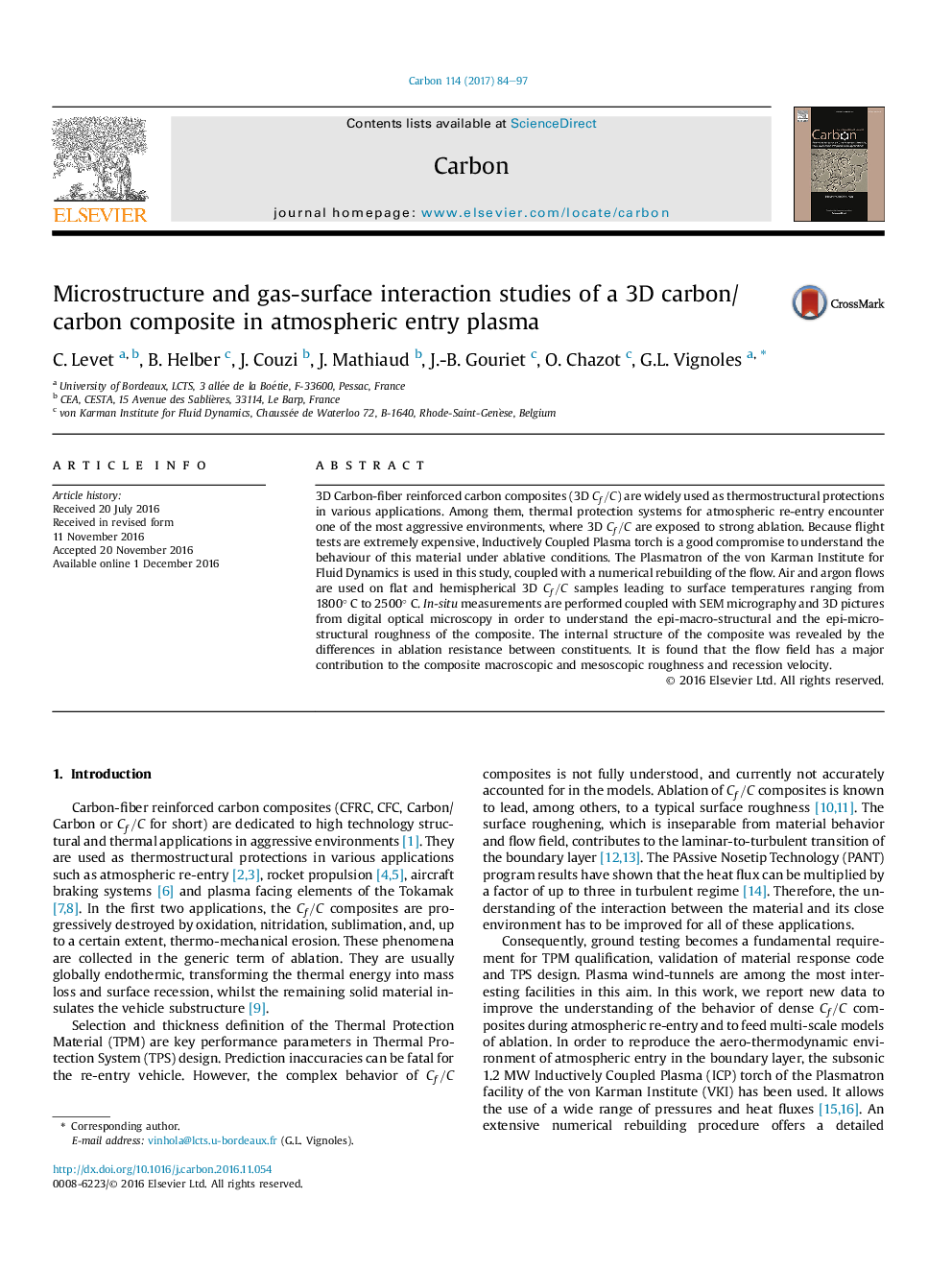| Article ID | Journal | Published Year | Pages | File Type |
|---|---|---|---|---|
| 5432495 | Carbon | 2017 | 14 Pages |
3D Carbon-fiber reinforced carbon composites (3D Cf/C) are widely used as thermostructural protections in various applications. Among them, thermal protection systems for atmospheric re-entry encounter one of the most aggressive environments, where 3D Cf/C are exposed to strong ablation. Because flight tests are extremely expensive, Inductively Coupled Plasma torch is a good compromise to understand the behaviour of this material under ablative conditions. The Plasmatron of the von Karman Institute for Fluid Dynamics is used in this study, coupled with a numerical rebuilding of the flow. Air and argon flows are used on flat and hemispherical 3D Cf/C samples leading to surface temperatures ranging from 1800° C to 2500° C. In-situ measurements are performed coupled with SEM micrography and 3D pictures from digital optical microscopy in order to understand the epi-macro-structural and the epi-micro-structural roughness of the composite. The internal structure of the composite was revealed by the differences in ablation resistance between constituents. It is found that the flow field has a major contribution to the composite macroscopic and mesoscopic roughness and recession velocity.
Graphical abstractDownload high-res image (343KB)Download full-size image
